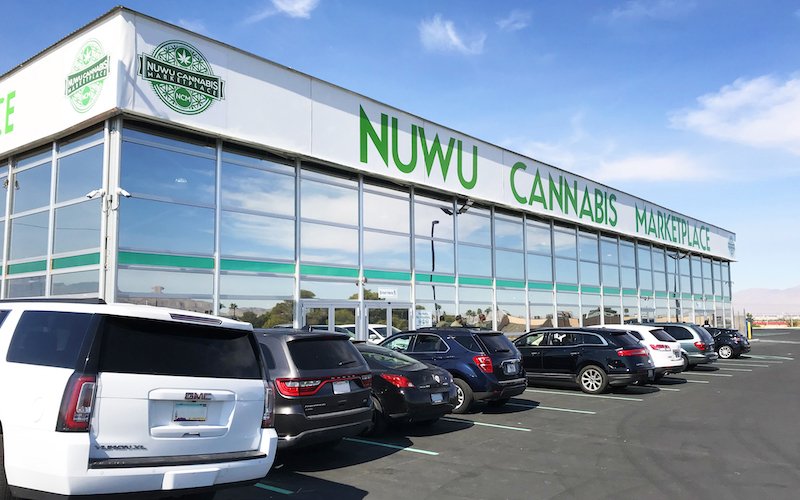Tribal populations are in dire need of a cash infusion. Most are too isolated to bring in tourists, others lack the infrastructure to bring in new business. Some forward-thinking tribes are capitalizing on the cash crop of the future and investing in cannabis companies that could revitalize their lagging economies. However, tribal lands are designated federal property, which means tribes must obey federal laws despite their distinction as sovereign entities. The contradiction is forcing some tribes out of the cannabis conversation and leaving billions of would-be dollars on the table.
Barriers to Entry
The Cole and Wilkinson memos issued by the Obama administration were meant to protect cannabis businesses from federal interference. After their rescission in January 2018, legal marijuana businesses were susceptible to federal raids, particularly those operating on federal lands (i.e. tribal businesses). Native Americans were essentially blocked from entering the legal cannabis space, a sector which could generate billions in revenue and create thousands of jobs for a historically underemployed and impoverished population.
According to a 2018 report by New Frontier Data (NFD), “Cannabis & Native Populations,” the marijuana market could generate a total of $2.7 billion in economic activity on Native American lands by 2025. It would also increase employment on tribal lands, with NFD projecting employment of more than 30,000 people, assuming tribal operations could capture at least five percent of U.S. market share.
This could be a serious economic driver for a population with an unemployment rate of 8.9 percent at the end of 2016, more than double the national average during that time period. Geographic isolation and a lack of economic infrastructure play a significant role in faltering tribal economies. Many reservations are located in isolated areas, far removed from city centers and tourist destinations. Further, many tribes lack access to the capital required to update local infrastructure, such as water, power, and sewage. As such, developers seeking to enter tribal lands must also include infrastructural improvements in their lease agreements, a move which could add time and expense to building projects.
Economic Drivers
Some tribes attempted to resolve these issues by using their sovereignty to establish gaming businesses, or legalized gambling. Though the practice has been a strong economic driver for some tribes, of those with gaming operations, only 12.5 percent share per capita payments from gaming revenues with reservation inhabitants. Further, many tribes are too isolated to draw tourists to their reservations for gambling. Whether due to isolation or other barriers to entry, more than 58 percent of Native American tribes do not operate any gaming operations, according to NFD’s 2018 report.
Other options for economic development include selling natural resources (coal, oil, minerals), but the practice is often environmentally destructive and unsustainable. Once the resources are exhausted, the tribe may once again face an economic downturn. The question becomes: how can tribal populations use their sovereignty and isolation to their advantage? Cannabis-related jobs may hold the key. As NFD reported: “Many reservations are isolated relative to large population centers, so they are unable to capitalize on local visitors our tourism. So, in order to create sustainable economic development, tribes must provide a product or service that is in high demand and can be transported to consumers rather than relying on consumers to come to them (as in the gambling model).”
The report further added, “Cannabis-related jobs also fit the mold, and the fact that most cannabis jobs (cultivation, extraction/processing, health-oriented products) are manual and do not require higher education degrees mean that cannabis operations could have a nearly immediate
effect on the community, and would be located on tribal lands.”
Reinvesting in Tribal Economies with NuWu
One tribe to capitalize on the opportunity is the Paiute Tribe in Nevada. They opened NuWu, which, until recently, was the world’s largest dispensary and also Nevada’s first retail dispensary to operate on tribal lands. Its opening was dependent on the passage of Senate Bill 375, which authorized the
Governor to enter into negotiations with Native American tribes in the state regarding the regulation and use of cannabis. NuWu committed to using all profits to fund the tribal community. In a statement provided to News 3 Las Vegas, Las Vegas Paiute Tribal Chairman Benny Tso commented: “We want the dollar to roll around in our tribal community before it leaves the reservation.” Those dollars will be significant to the tribe’s economy, considering Nevada pulled in over $30 million in tax revenue during its first six months of recreational cannabis sales.
Native Americans aren’t the only indigenous people hoping to enter the cannabis space. First Nations tribes are also involved in legal battles to decide their role in Canada’s highly anticipated national legal marketplace. First Nations’ leaders have yet to receive information from Canadian government officials regarding revenue-sharing arrangements, taxation guidelines, or a determination on self-regulation.
According to a resolution posited by the Assembly of First Nations, “The federal and provincial governments must recognize and respect First Nations sovereignty and jurisdiction over their reserves and traditional territories.” Leaders argue that cannabis production, distribution, and sales are covered by the right to self-determination in the Canadian Constitution. As with Native American populations, First Nations communities are fighting for their autonomy, and with it their ability to generate income and make decisions pertaining to the health and safety of their populations.
Tribal populations throughout North America stand to benefit from incorporating cannabis-related businesses into their economic development plans. Hemp production, cannabis cultivation, and cannabis extraction facilities are all viable options for generating revenue on isolated tribal lands. Though there are potential risks to entering the legal cannabis space, including federal interference and expensive sovereignty-related court battles, they are far outweighed by the potential benefits. In an interview with Ozy, Las Vegas resident Miranda Brode said she’s grateful the revenue will go back into the tribal economy: “A lot of American tribes you don’t hear about anymore because they all died out. This is helping conserve them. It means we can have tribes in the future, and I can show my kids that we are part of this heritage.”
Author
-

Patricia Miller is an executive editor at Innovative Properties Worldwide. She explores science, technology, and policy shaping the legal cannabis sector. Follow her work when you subscribe to Cannabis & Tech Today at cannatechtoday.com/subscribe/ or visit her website https://patriciamiller.squarespace.com/.






